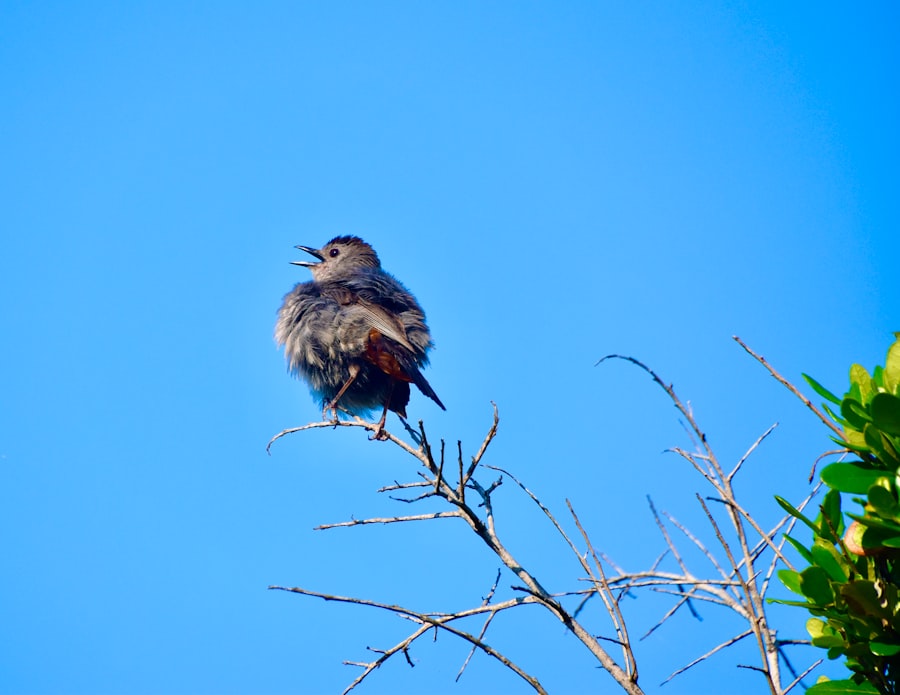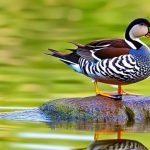Grey and white duck breeds are a popular choice for farmers and hobbyists alike. These breeds are known for their unique coloration and are often prized for their meat and eggs. Grey and white ducks come in a variety of breeds, each with its own distinct characteristics and traits. These ducks are not only beautiful to look at, but they also serve a practical purpose on the farm. In this article, we will explore the characteristics of grey and white duck breeds, popular breeds, breeding and rearing practices, housing and care, their role in agriculture, and the future of these unique and valuable birds.
Table of Contents
Key Takeaways
- Grey and white duck breeds are popular for their unique characteristics and suitability for various purposes in agriculture.
- These duck breeds are known for their adaptability, hardiness, and good egg-laying abilities.
- Some popular grey and white duck breeds include the Pekin, Silver Appleyard, and Saxony ducks.
- Breeding and rearing grey and white ducks require proper care, nutrition, and attention to ensure healthy offspring.
- Providing suitable housing and care is essential for the well-being and productivity of grey and white duck breeds in agriculture.
Characteristics of Grey and White Duck Breeds
Grey and white duck breeds are known for their striking coloration, which sets them apart from other duck breeds. These ducks can come in various shades of grey, from light silver to dark charcoal, and their feathers often have a beautiful iridescent sheen. White ducks, on the other hand, have pure white feathers that give them a clean and elegant appearance. In addition to their coloration, grey and white duck breeds are also known for their hardiness and adaptability. They are well-suited to a variety of climates and can thrive in both free-range and confined settings. These ducks are also known for their calm and friendly demeanor, making them a popular choice for backyard flocks. In terms of size, grey and white duck breeds can range from medium to large, with males typically being larger than females. Overall, these ducks are not only visually stunning but also possess practical qualities that make them valuable additions to any farm or homestead.
Grey and white duck breeds are also known for their excellent foraging abilities and efficient egg production. These ducks are natural foragers and can help control pests in the garden or on the farm. They are also prolific layers, producing a consistent supply of large, white eggs that are prized for their rich flavor. In addition to their egg-laying abilities, grey and white duck breeds are also valued for their meat. The meat of these ducks is known for its tender texture and rich flavor, making it a popular choice for culinary purposes. Overall, grey and white duck breeds possess a unique combination of beauty, practicality, and productivity that make them a valuable asset to any farm or homestead.
Popular Grey and White Duck Breeds
There are several popular grey and white duck breeds that are favored by farmers and hobbyists around the world. One of the most well-known grey duck breeds is the Swedish Blue duck. This breed is characterized by its striking blue-grey plumage and is prized for its excellent egg-laying abilities. Swedish Blue ducks are also known for their calm and friendly temperament, making them a popular choice for backyard flocks. Another popular grey duck breed is the Ancona duck, which features a unique mottled pattern of black and white feathers. Anconas are known for their hardiness and adaptability, as well as their prolific egg production. In addition to grey duck breeds, there are also several popular white duck breeds, such as the Pekin duck. Pekins are large, white ducks that are prized for their meat production and are commonly raised for commercial purposes. They are known for their rapid growth rate and efficient feed conversion, making them a popular choice for meat production. Another popular white duck breed is the White Crested duck, which is characterized by its pure white feathers and distinctive crest on top of its head. White Crested ducks are valued for their ornamental appearance as well as their egg-laying abilities.
Breeding and Rearing Grey and White Ducks
Breeding and rearing grey and white ducks requires careful attention to ensure the health and productivity of the flock. When breeding grey and white ducks, it is important to select breeding stock that exhibits the desired coloration, size, temperament, and productivity. Breeding ducks should be healthy, free from genetic defects, and have good egg-laying or meat-producing qualities. It is also important to provide proper nutrition and housing to breeding ducks to ensure optimal fertility and hatchability of eggs. When rearing ducklings, it is important to provide a warm and secure brooding area with access to clean water and nutritious feed. Ducklings should be carefully monitored for signs of illness or stress and provided with appropriate care to ensure their healthy growth and development.
Housing and Care for Grey and White Ducks
Proper housing and care are essential for the health and well-being of grey and white ducks. Ducks should be provided with a secure shelter that protects them from predators, extreme weather conditions, and provides adequate space for movement. The shelter should also have good ventilation to prevent respiratory issues and be kept clean to minimize the risk of disease. Ducks should also have access to a clean water source for drinking and bathing, as well as nutritious feed that meets their dietary needs. It is important to regularly monitor the health of ducks and provide prompt veterinary care if needed. Additionally, ducks should be provided with opportunities for exercise, access to natural foraging areas, and enrichment activities to promote their physical and mental well-being.
Grey and White Duck Breeds in Agriculture

Grey and white duck breeds play an important role in agriculture, providing valuable resources such as meat, eggs, pest control, and fertilizer. These ducks are efficient foragers and can help control pests in the garden or on the farm, reducing the need for chemical pesticides. They also produce a consistent supply of large, nutritious eggs that are valued for their rich flavor and high protein content. In addition to egg production, grey and white duck breeds are also raised for meat production. Duck meat is known for its tender texture and rich flavor, making it a popular choice for culinary purposes. Ducks also produce nutrient-rich manure that can be used to fertilize crops and improve soil health. Overall, grey and white duck breeds contribute to sustainable agriculture practices by providing valuable resources while minimizing environmental impact.
Conclusion and Future of Grey and White Duck Breeds
In conclusion, grey and white duck breeds are valued for their unique coloration, practical qualities, productivity, and contributions to agriculture. These ducks come in a variety of breeds, each with its own distinct characteristics and traits. They are known for their striking coloration, hardiness, adaptability, excellent foraging abilities, efficient egg production, and high-quality meat. Grey and white duck breeds play an important role in agriculture by providing valuable resources such as meat, eggs, pest control, and fertilizer while contributing to sustainable farming practices. The future of grey and white duck breeds looks promising as they continue to be valued for their versatility, productivity, and contributions to sustainable agriculture.
In conclusion, grey and white duck breeds are an essential part of agriculture due to their unique coloration, practical qualities, productivity, contributions to agriculture while being valued for their versatility in sustainable farming practices. These ducks come in various breeds with distinct characteristics such as striking coloration, hardiness, adaptability, excellent foraging abilities, efficient egg production, high-quality meat production among others. The future of grey and white duck breeds looks promising as they continue to be valued for their versatility in sustainable farming practices while contributing significantly to agriculture through valuable resources such as meat production, egg production among others while minimizing environmental impact through pest control using natural methods such as foraging capabilities among others.
If you’re considering raising grey and white duck breeds, you may also be interested in learning about the best housing options for your poultry. Poultry Wizard offers insightful articles on chicken coop designs, such as the Snaplock Chicken Coop and the Hannah Montana Chicken Coop. Understanding the importance of a well-designed coop, including the floor of the chicken coop, can contribute to the overall health and well-being of your ducks and chickens.
FAQs
What are some common grey and white duck breeds?
Some common grey and white duck breeds include the Pekin, Swedish, and Silver Appleyard.
What are the characteristics of grey and white duck breeds?
Grey and white duck breeds typically have a medium to large size, a rounded body, and a distinctive grey and white plumage. They are known for their calm and friendly temperament.
What are the uses of grey and white duck breeds?
Grey and white duck breeds are commonly raised for their meat, eggs, and as pets. They are also popular for exhibition and ornamental purposes.
What are the care requirements for grey and white duck breeds?
Grey and white duck breeds require access to water for swimming and bathing, a balanced diet of commercial duck feed and fresh greens, and protection from predators. They also need regular veterinary care and vaccinations.
Are grey and white duck breeds good for beginners?
Yes, grey and white duck breeds are generally good for beginners as they are easy to care for, adaptable, and have a friendly disposition. However, proper research and preparation are still necessary before raising them.
Meet Walter, the feathered-friend fanatic of Florida! Nestled in the sunshine state, Walter struts through life with his feathered companions, clucking his way to happiness. With a coop that’s fancier than a five-star hotel, he’s the Don Juan of the chicken world. When he’s not teaching his hens to do the cha-cha, you’ll find him in a heated debate with his prized rooster, Sir Clucks-a-Lot. Walter’s poultry passion is no yolk; he’s the sunny-side-up guy you never knew you needed in your flock of friends!







